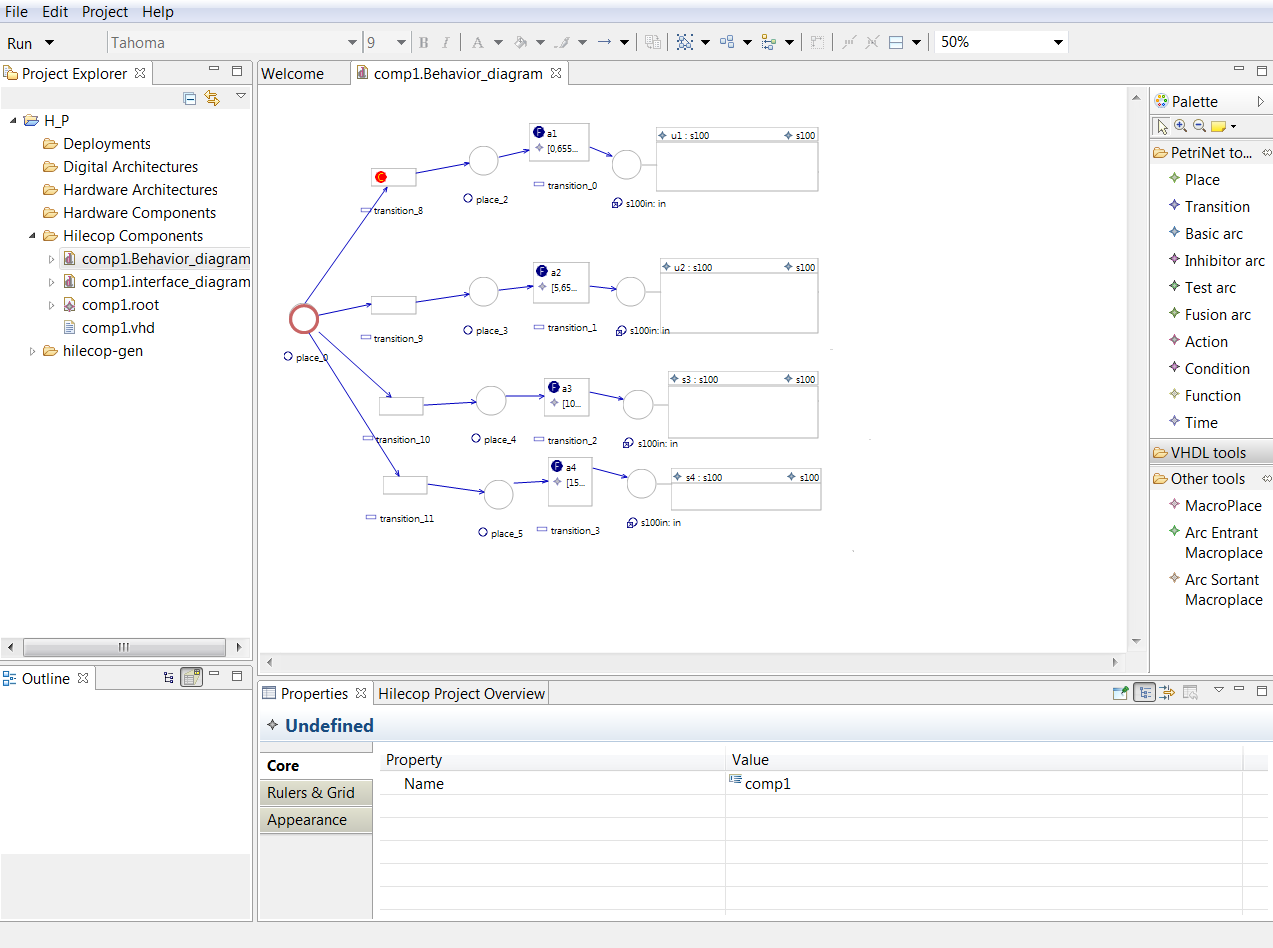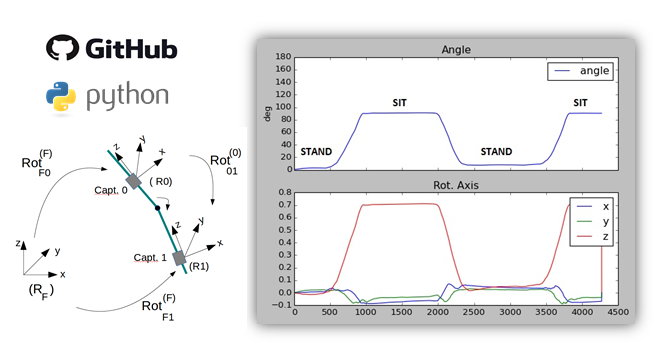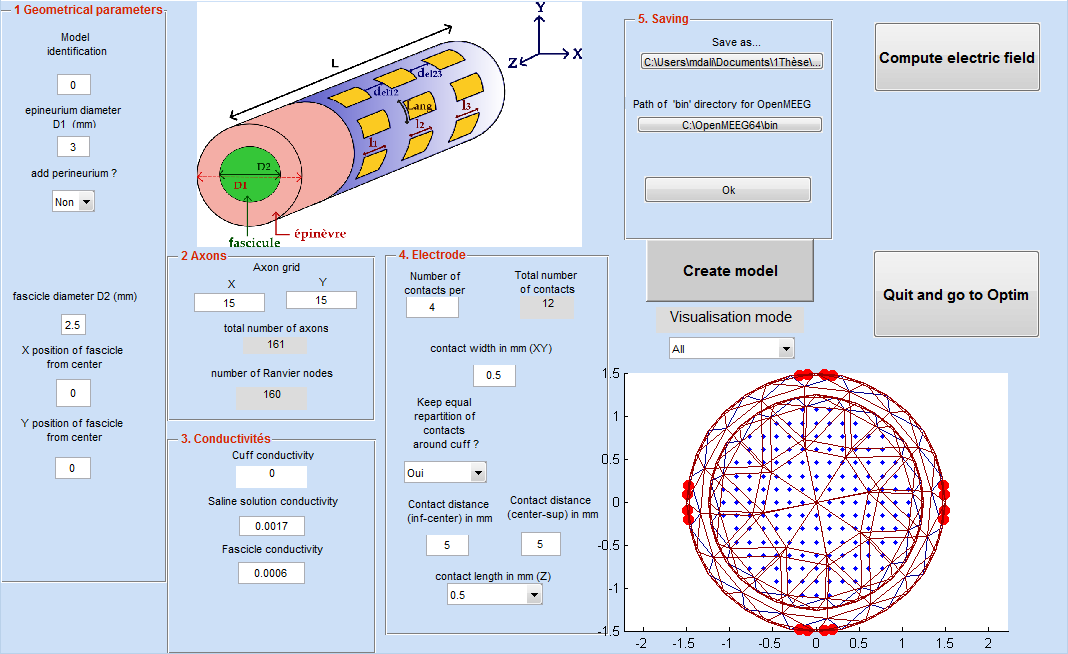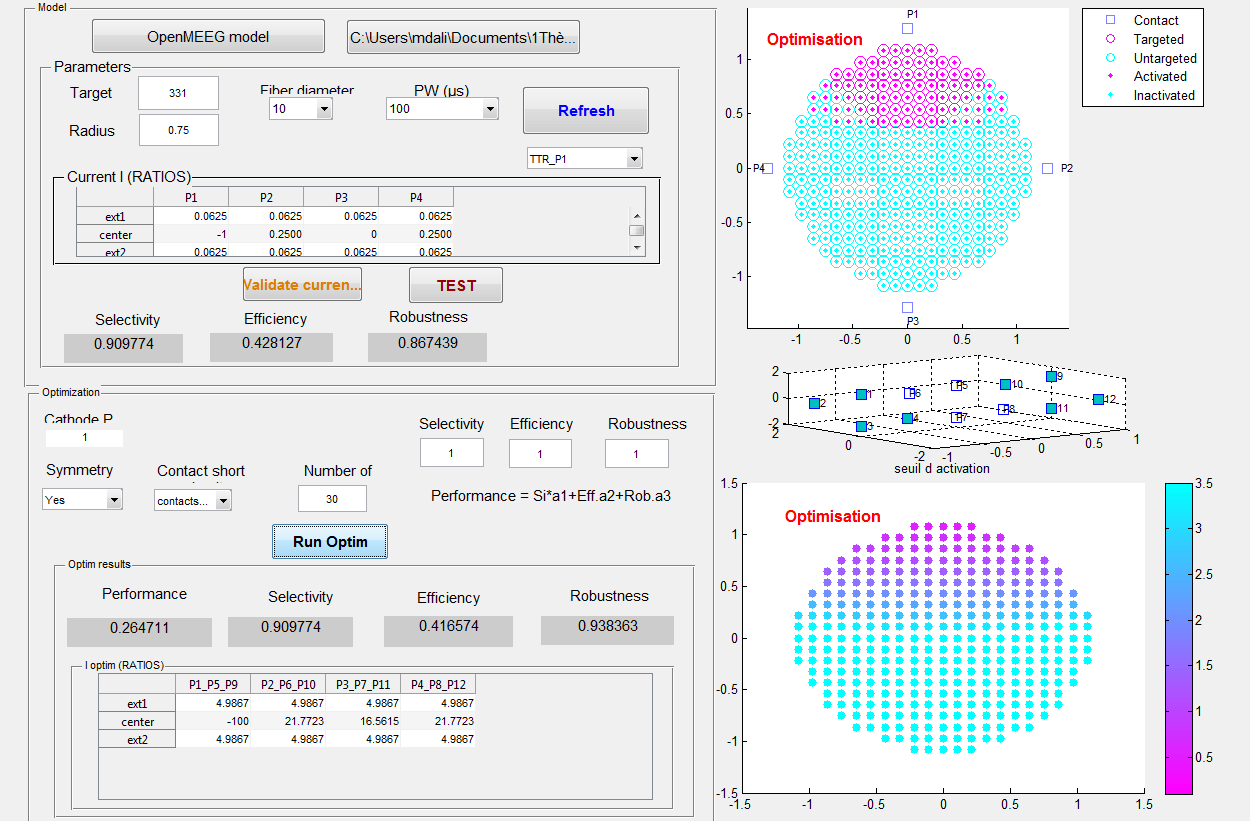Section: New Software and Platforms
Softwares
HILECOP
Participants : Baptiste Colombani, David Andreu.
High Level hardware Component Programming
Functional Description: Our SENIS (Stimulation Electrique Neurale dIStribuee) based FES architecture relies on distributed stimulation units (DSU) which are interconnected by means of a 2-wire based network. A DSU is a complex digital system since its embeds among others a dedicated processor (micro-machine with a specific reduced instruction set), a monitoring module and a 3-layer protocol stack. To face the complexity of the units digital part and to ease its prototyping on programmable digital devices (e.g. FPGA), we developed an approach for high level hardware component programming (HILECOP). To support the modularity and the reusability of sub-parts of complex hardware systems, the HILECOP methodology is based on components. An HILECOP component has: an Interpreted Time Petri Net (ITPN) based behavior 3, a set of functions whose execution is controlled by the PN, and a set of variables and signals. Its interface contains places and transitions from which its PN model can be inter-connected as well as signals it exports or imports. The interconnection of those components, from a behavioral point out view, consists in the interconnection of places and/or transitions according to well-defined mechanisms: interconnection by means of oriented arcs or by means of the "merging" operator (existing for both places and transitions).
Several formalism evolutions have been integrated within the HILECOP software, like for instance behavior agregation as well as exception handling, both for analysis and implementation sides. Analysis has also been improved, a new approach for state space generation of synchronously executed ITPN has been designed, validated and then integrated within the software.
The Eclipse-based version of HILECOP (registered at the french Agence de Protection des Programmes (APP)) has been refactored: for instance, the application ECore model, a new Eclipse E4 architecture and a set of new features (new link types and new views to connect components) have been developed.
Specification of GALS systems (Globally Asynchronous Locally Synchronous) and their deployment on the hardware architecture are ongoing works; the aim is to take into account deployment properties like connecting different clocks to HILECOP components within a same FPGA, or on a set of interconnected FPGAs (and thus interconnecting them by means of asynchronous signals).
Sensbiotk
Participants : Christine Azevedo Coste, Roger Pissard-Gibollet, Benoît Sijobert.
Sensbiotk is a toolbox in Python for the calibration, the acquisition, the analysis and visualization of motion capture Inertial Measurement Units (IMU). Motion and Gait parameter reconstruction algorithms are also available. http://sensbio.github.io/sensbiotk/
|
MOS2SENS
Participants : Mélissa Dali, Olivier Rossel, David Guiraud.
From Model Optimization and Simulation To Selective Electrical Neural Stimulation: it allows to manipulate 3D modeling of nerve and cuff electrodes taking into account anisotropy and the most advanced HH models of the myelinated axons. Based on optimized computing scheme, it allows to predict the acivation areas induced by a complex 3D spreading of the current over a multicontact electrodes. Moreover, the tool allows for performing optimization of the needed current to target a specific cross section of the nerve. Version 1.0 (IDDN.FR.001.490036.000.S.P.2014.000.31230) has been relaesed on december 2014 and v2.0 will be realeased January 2017. The last version includes full interface with OpenMEEG and COMSOL, and many other enhancements concerning both the model itself and the computation scheme.






